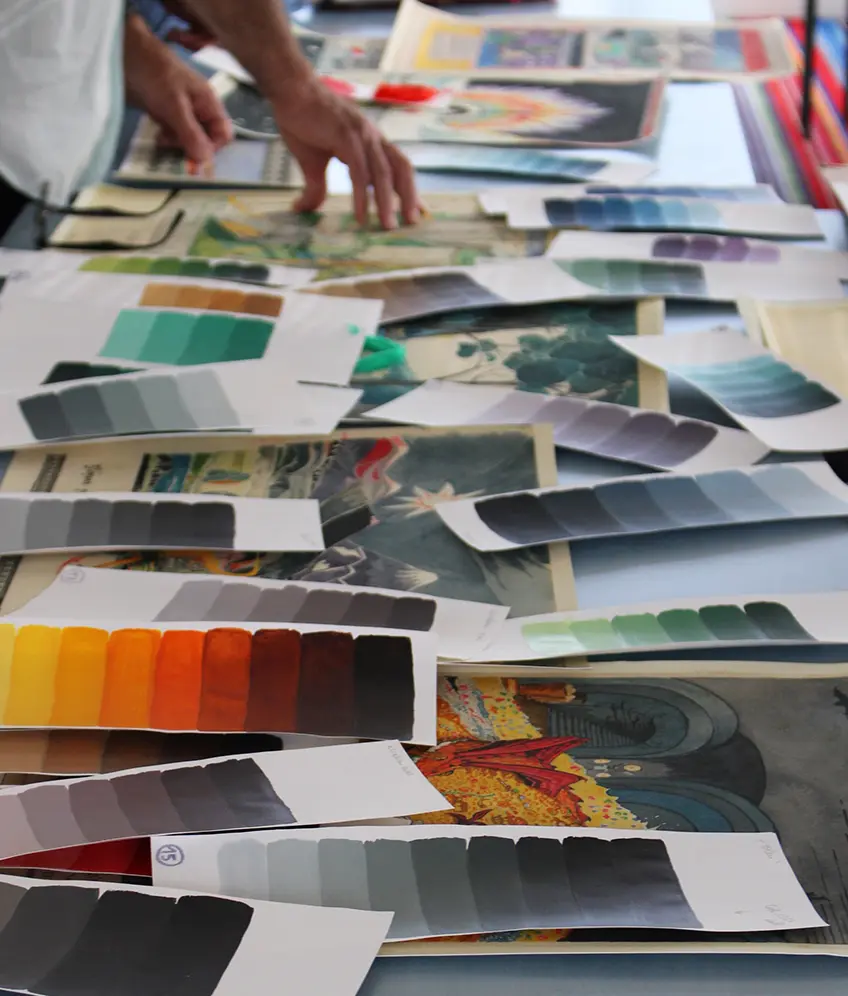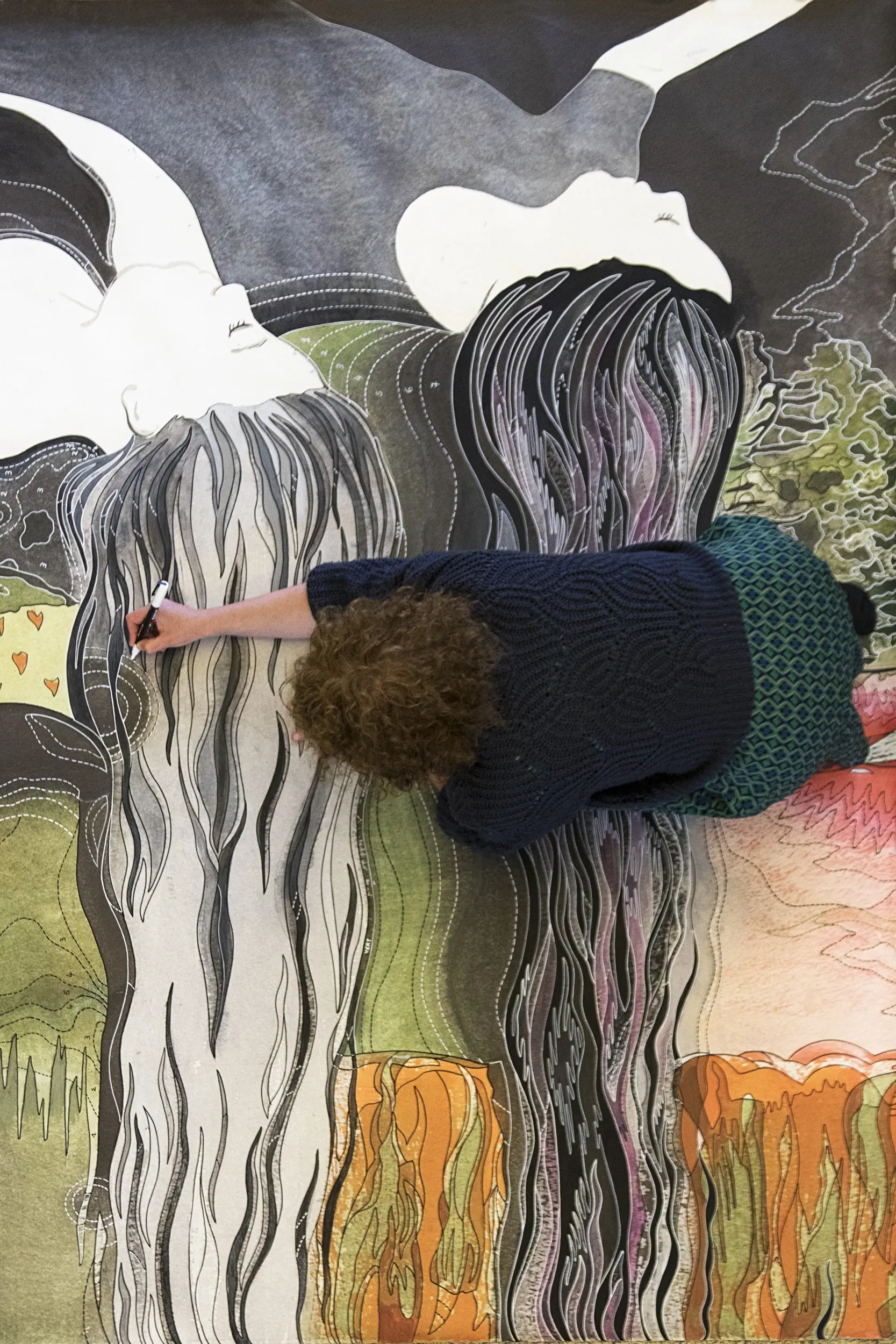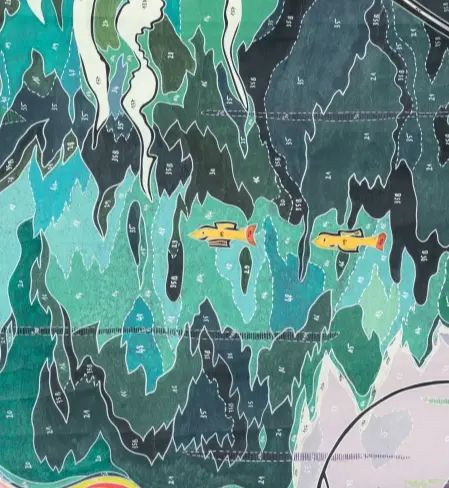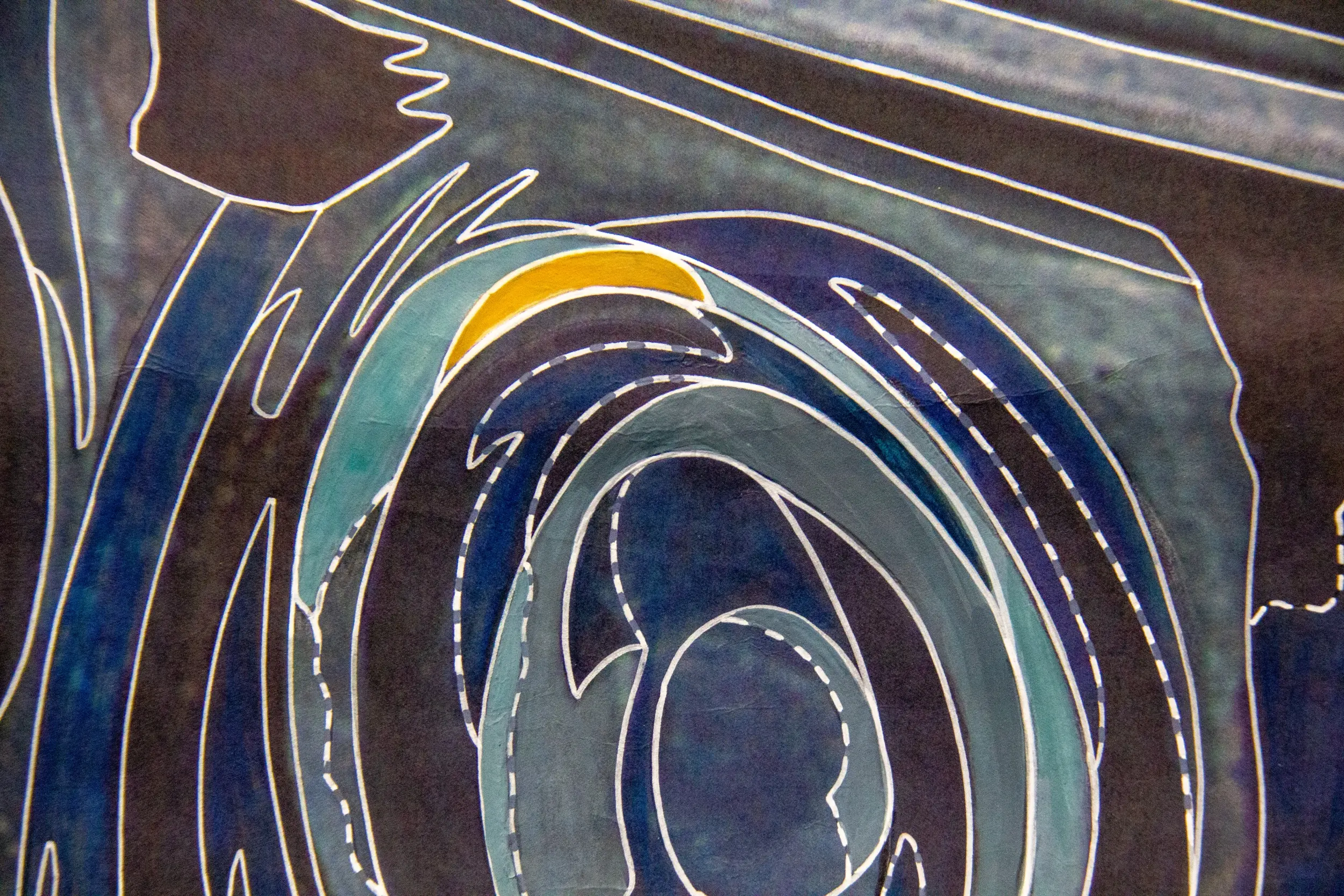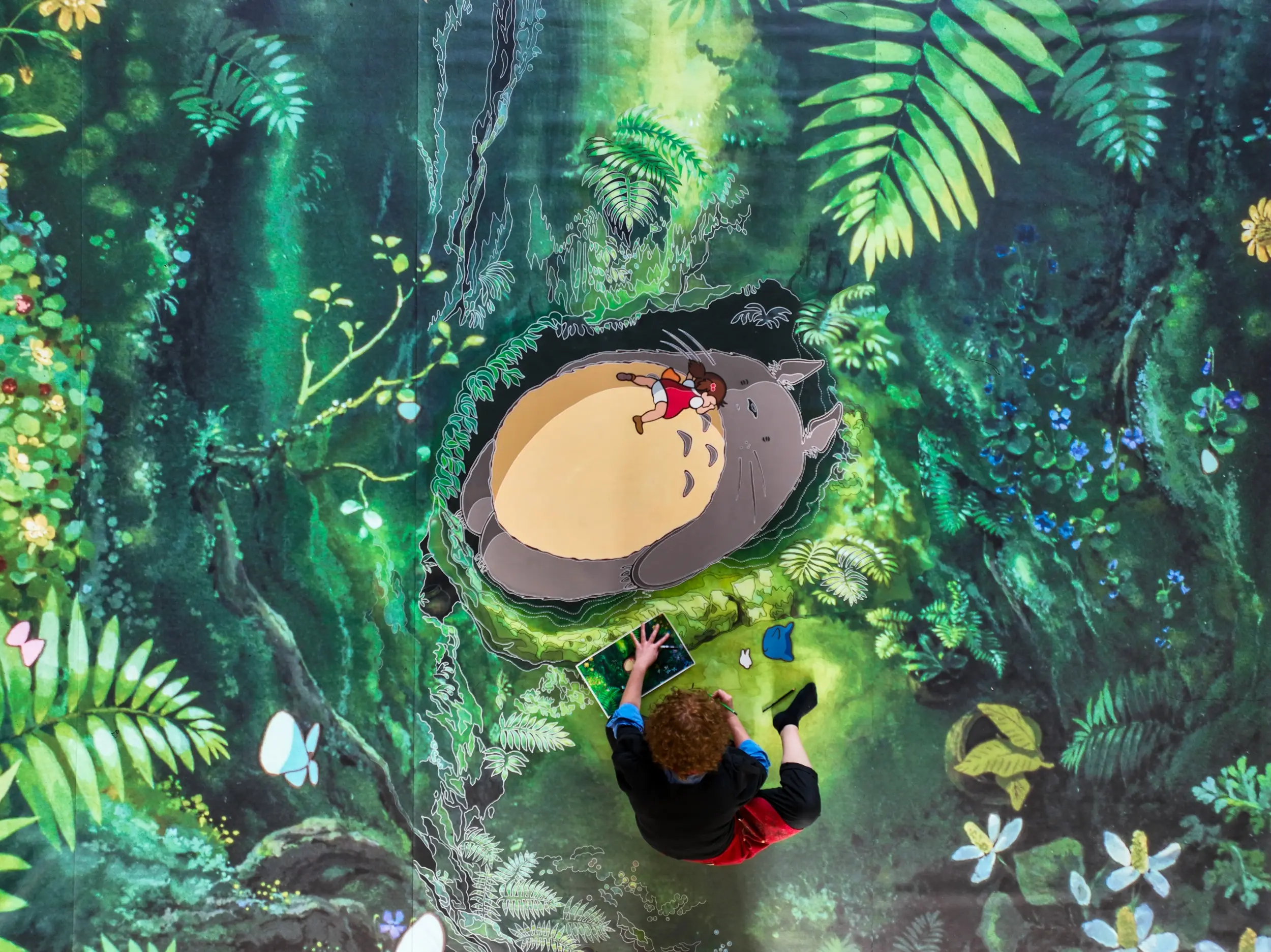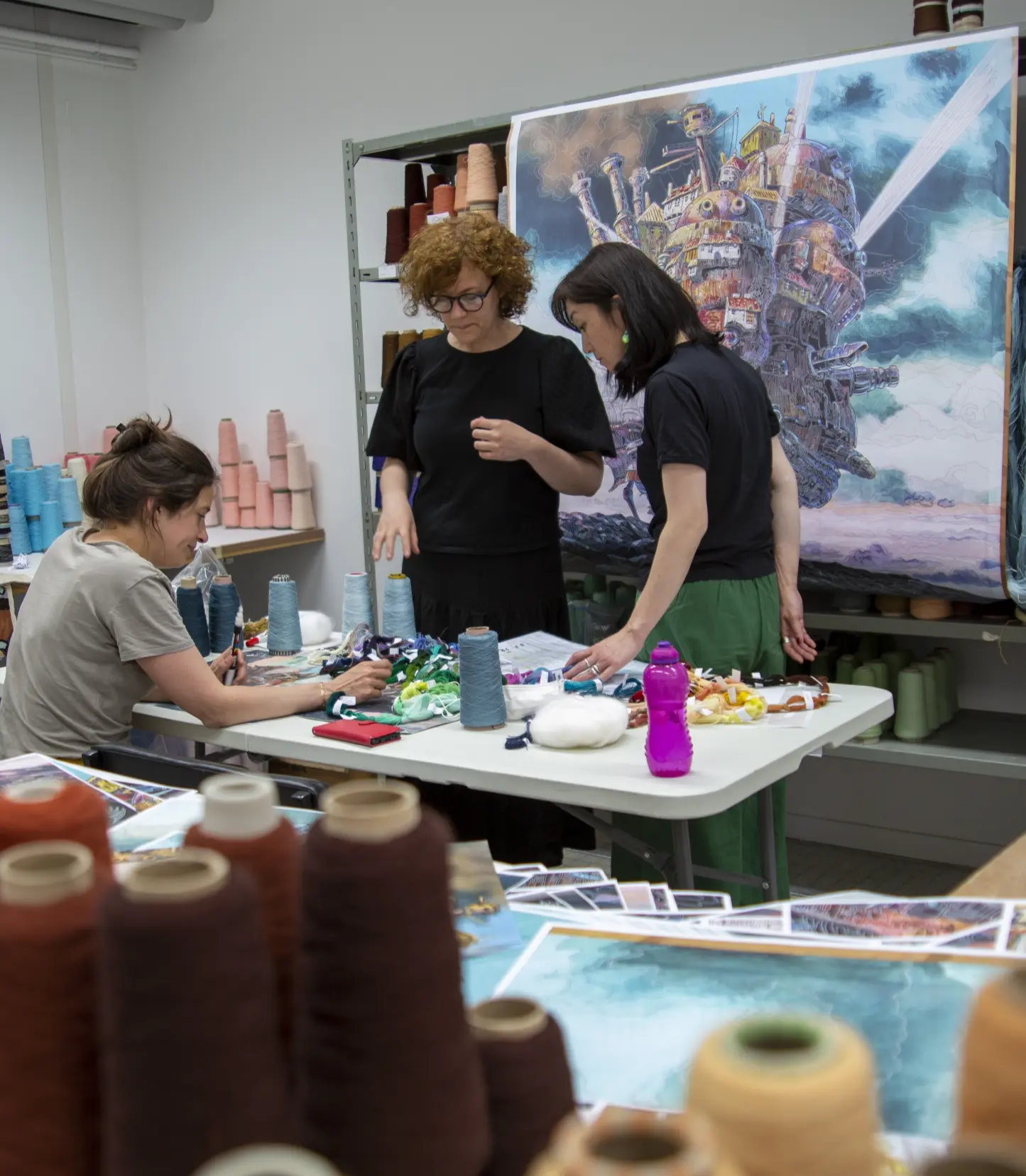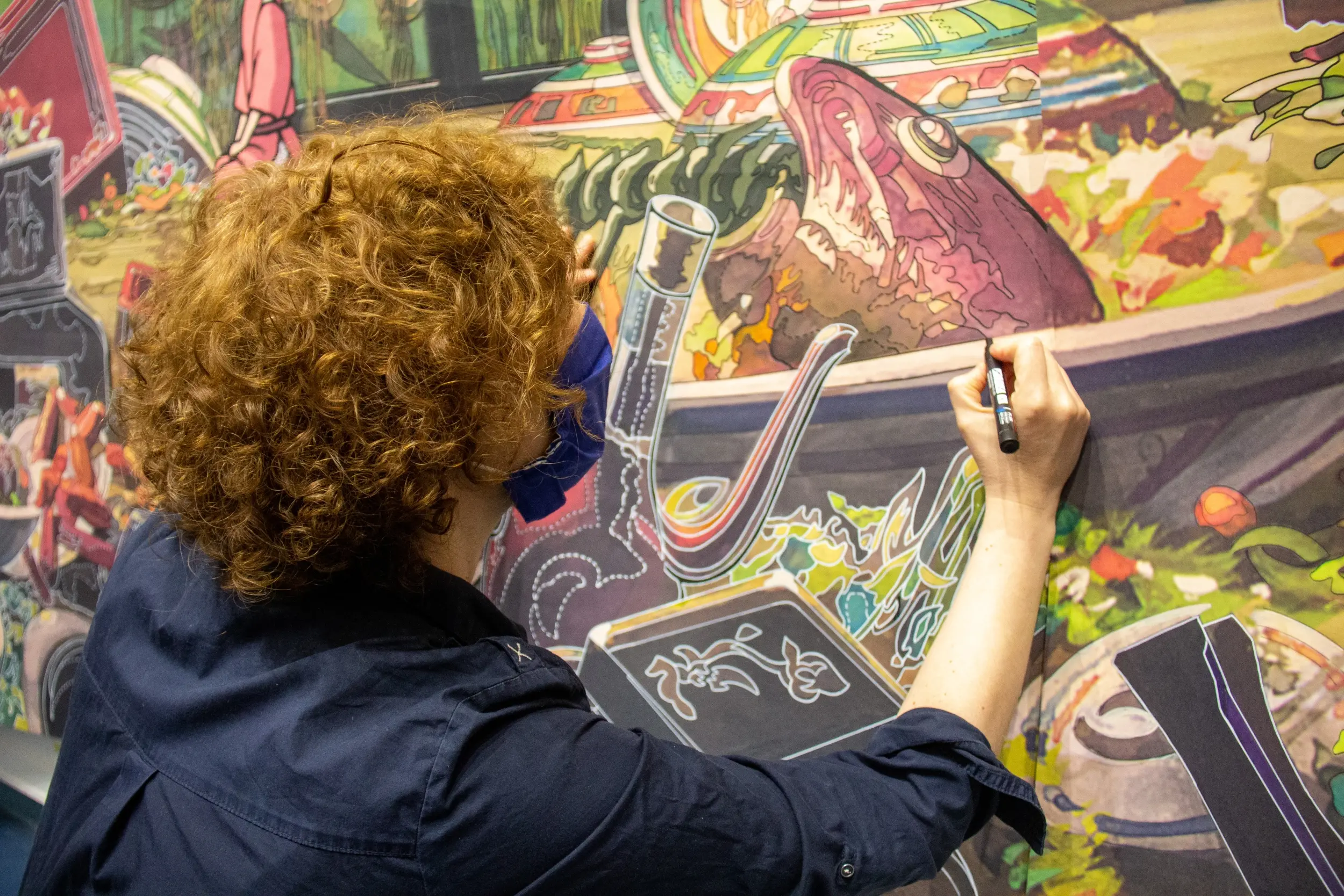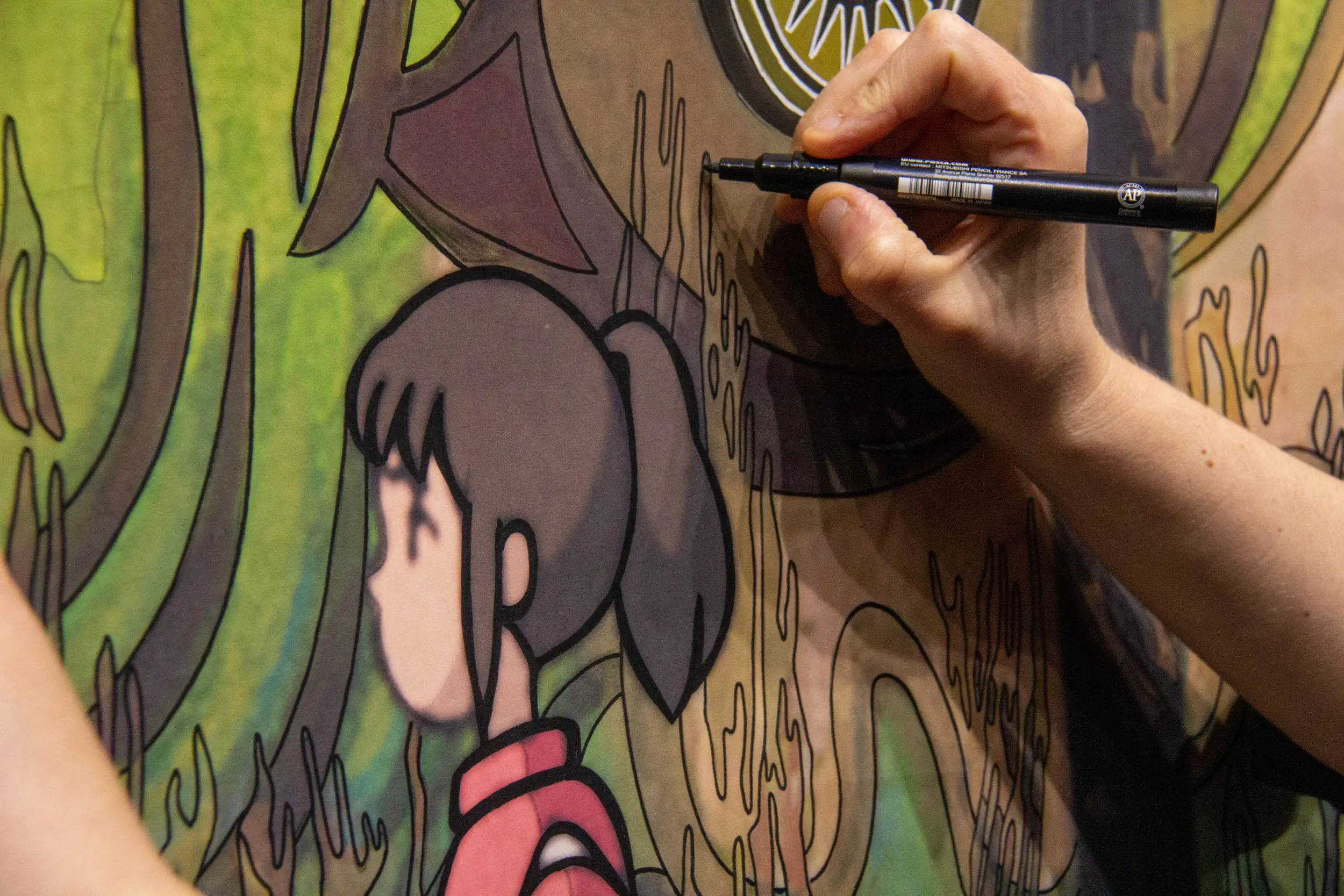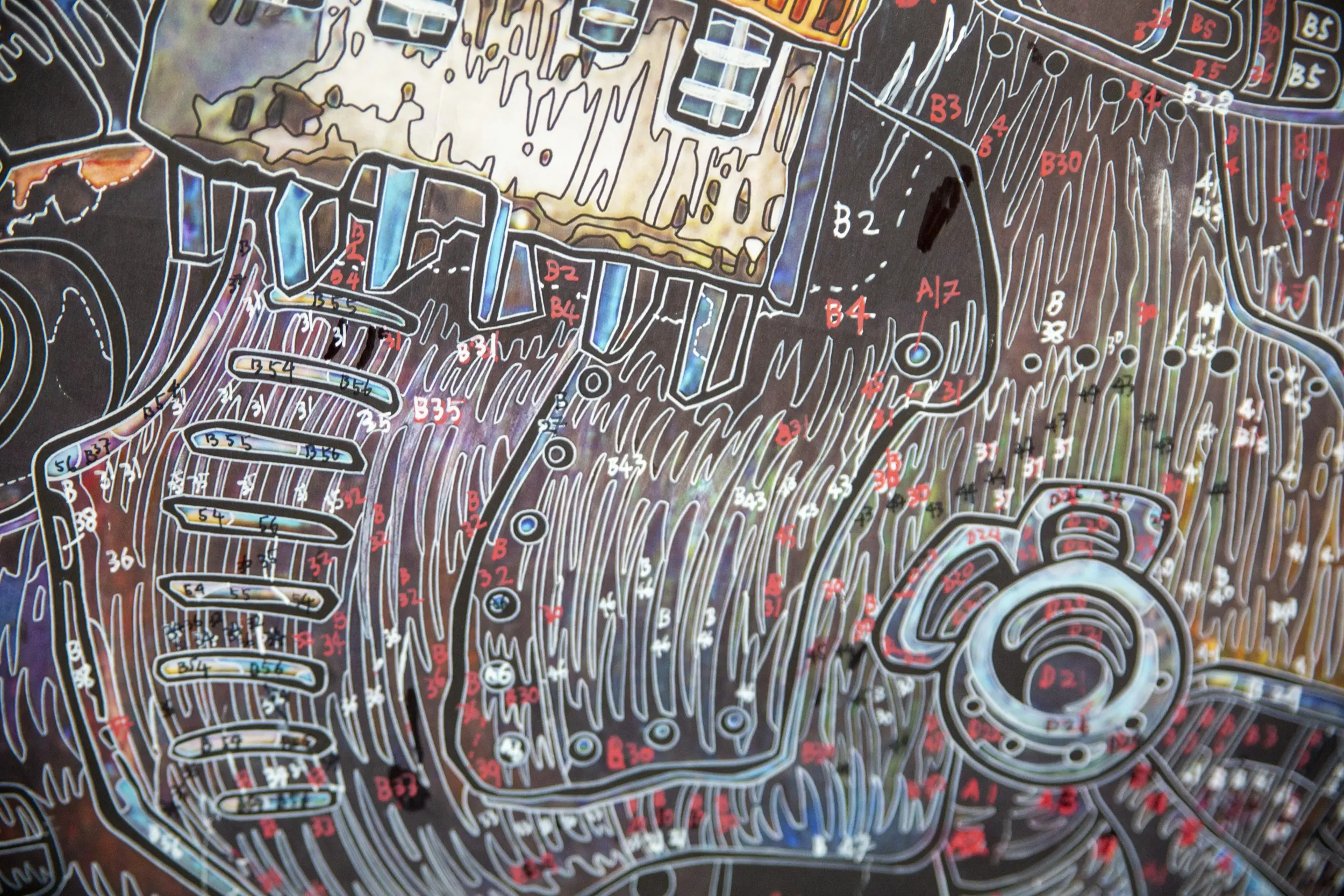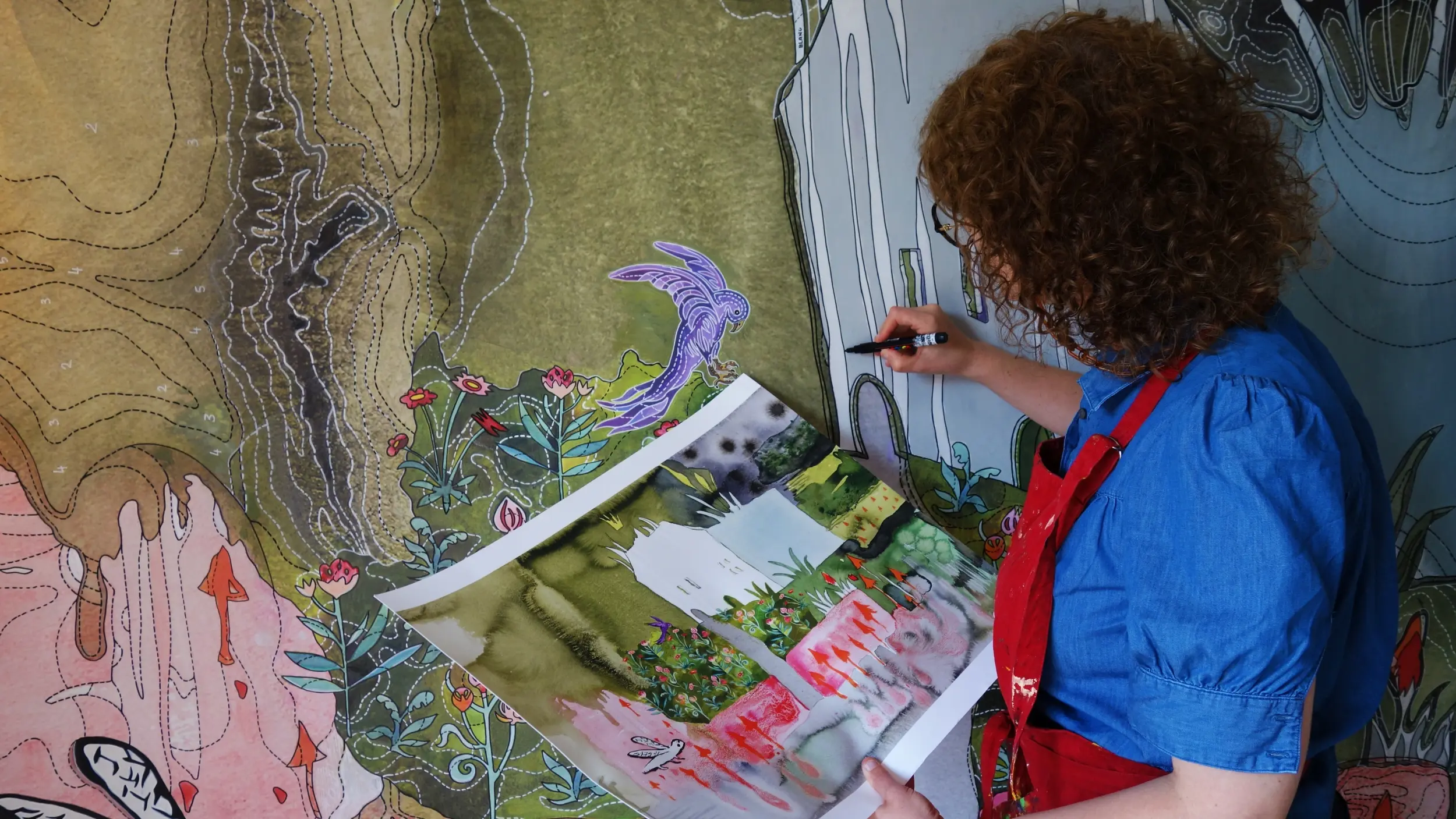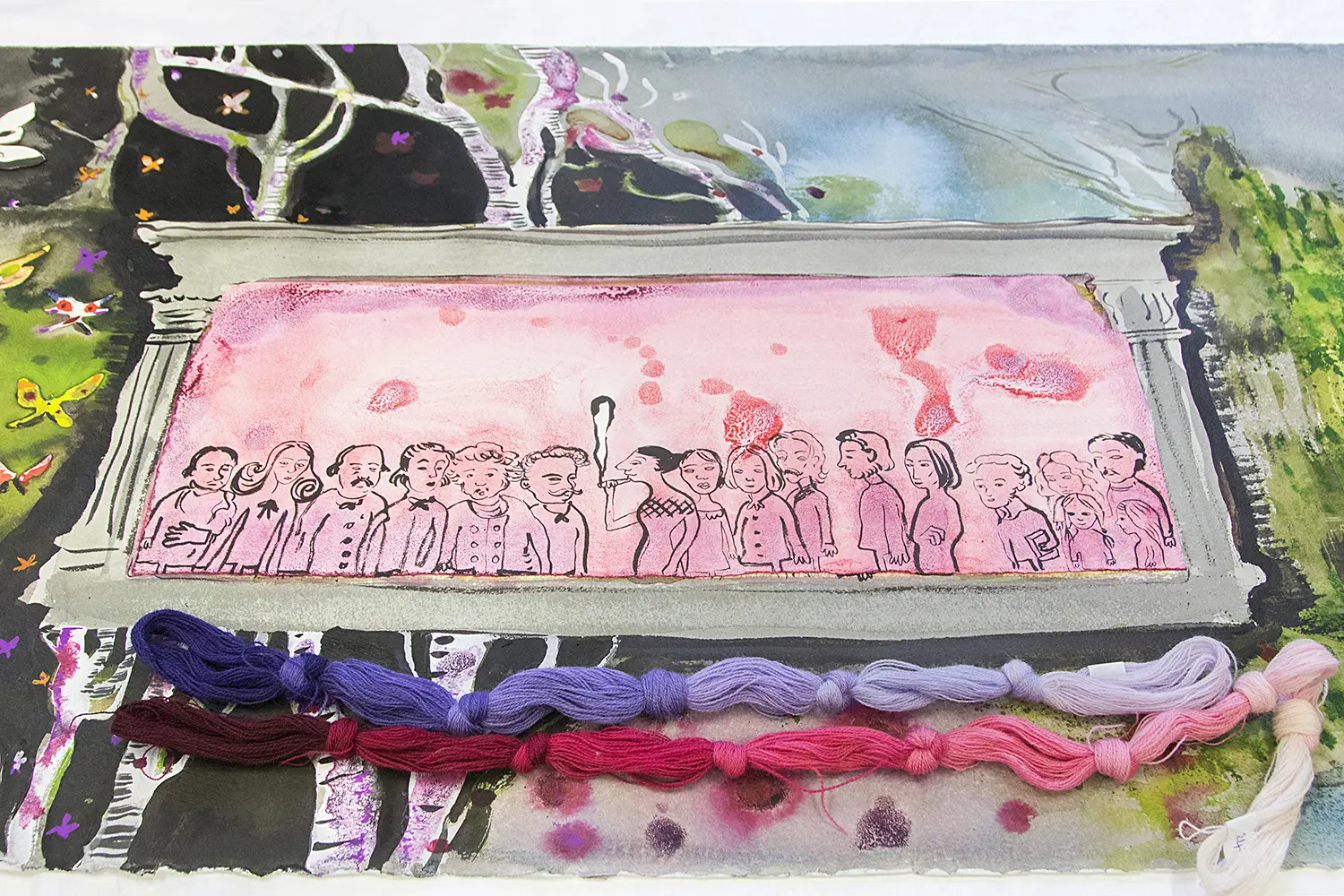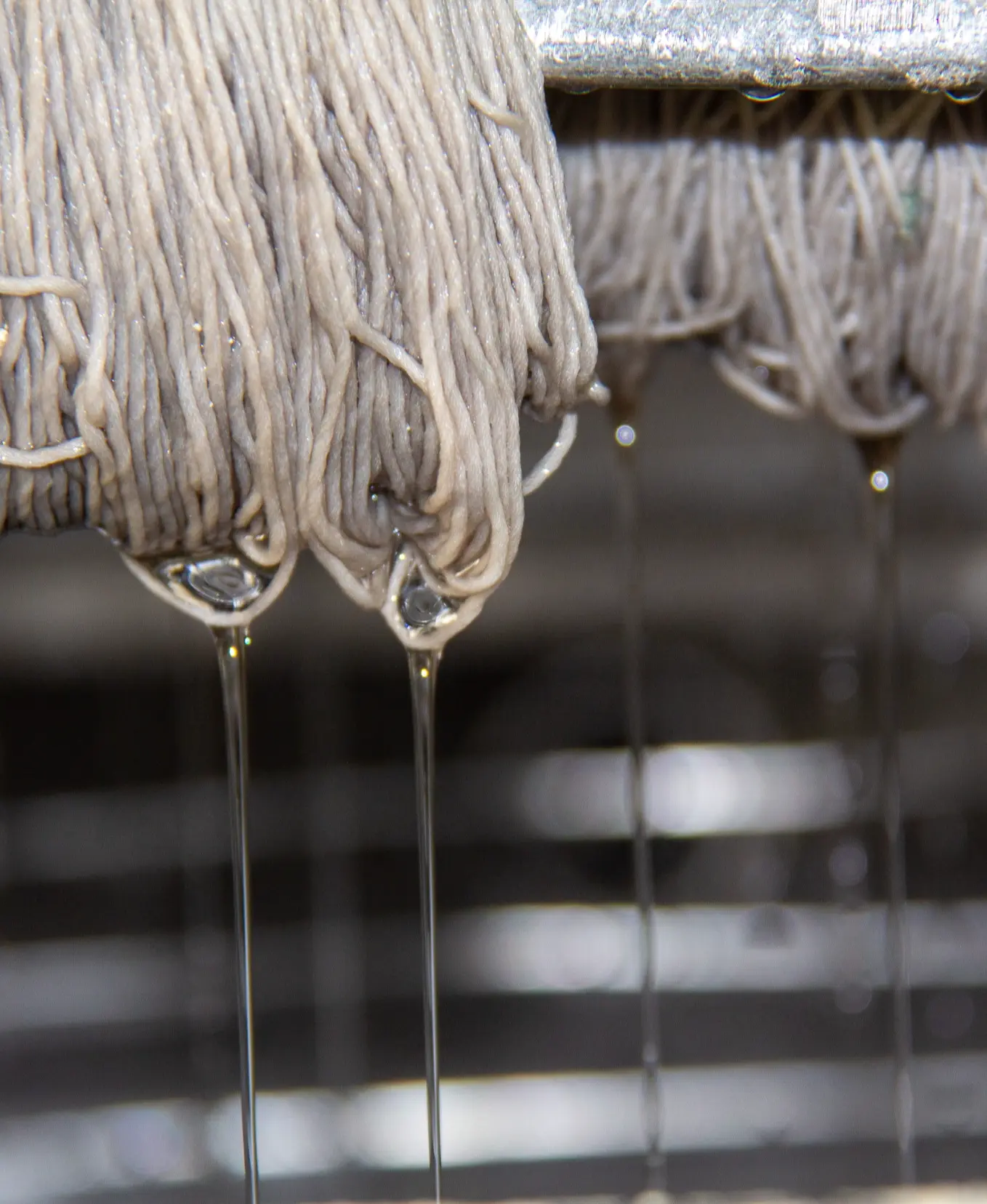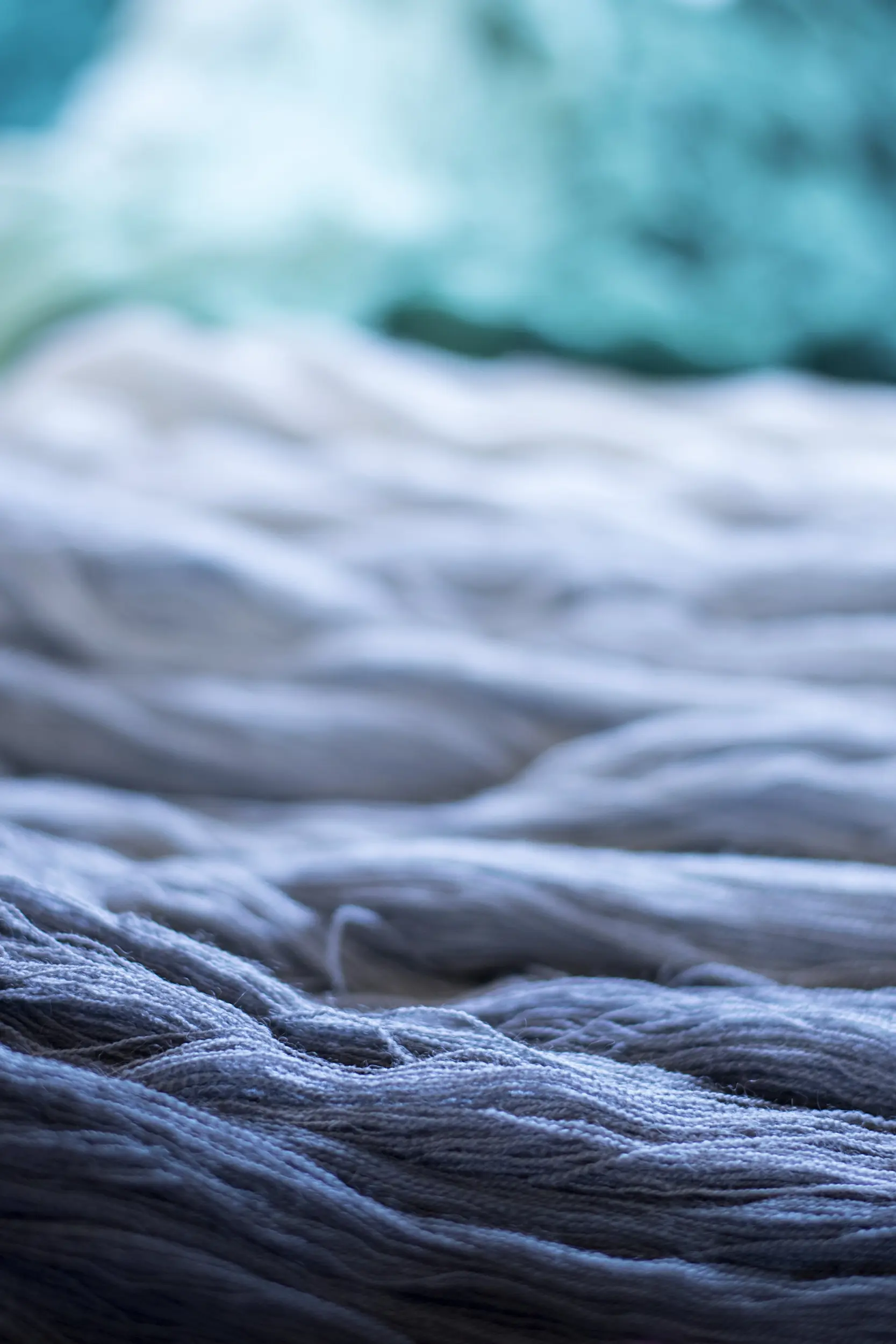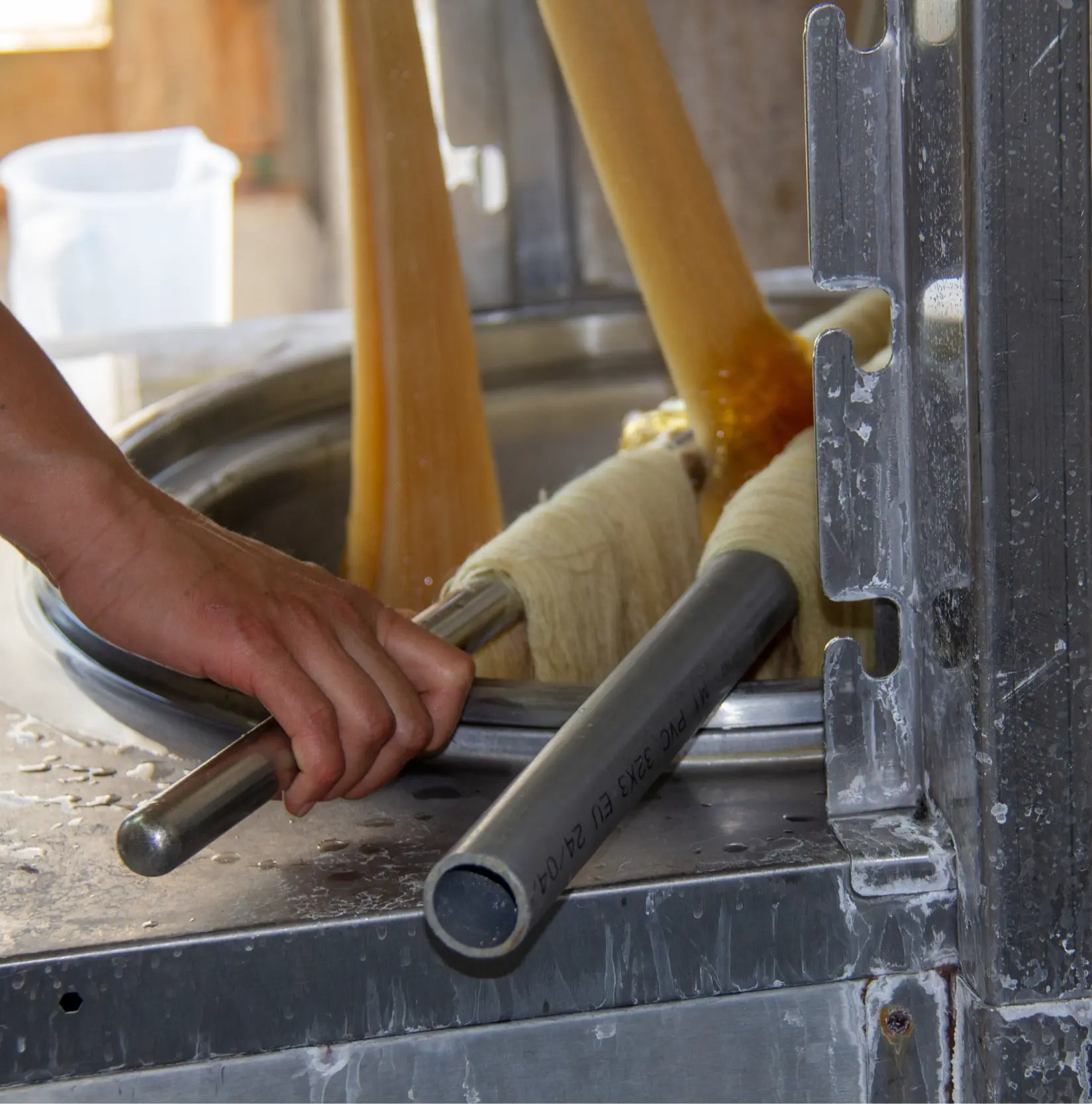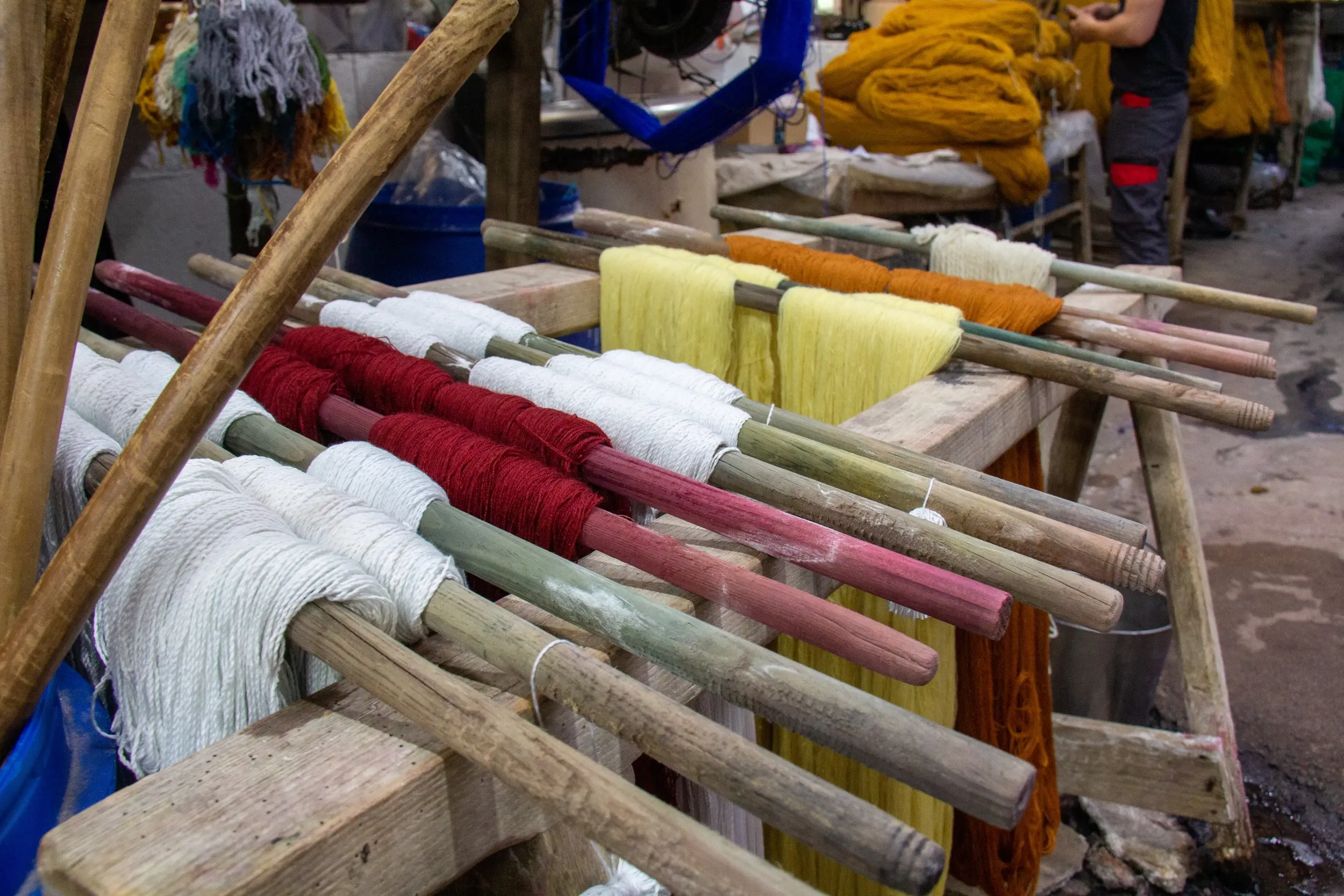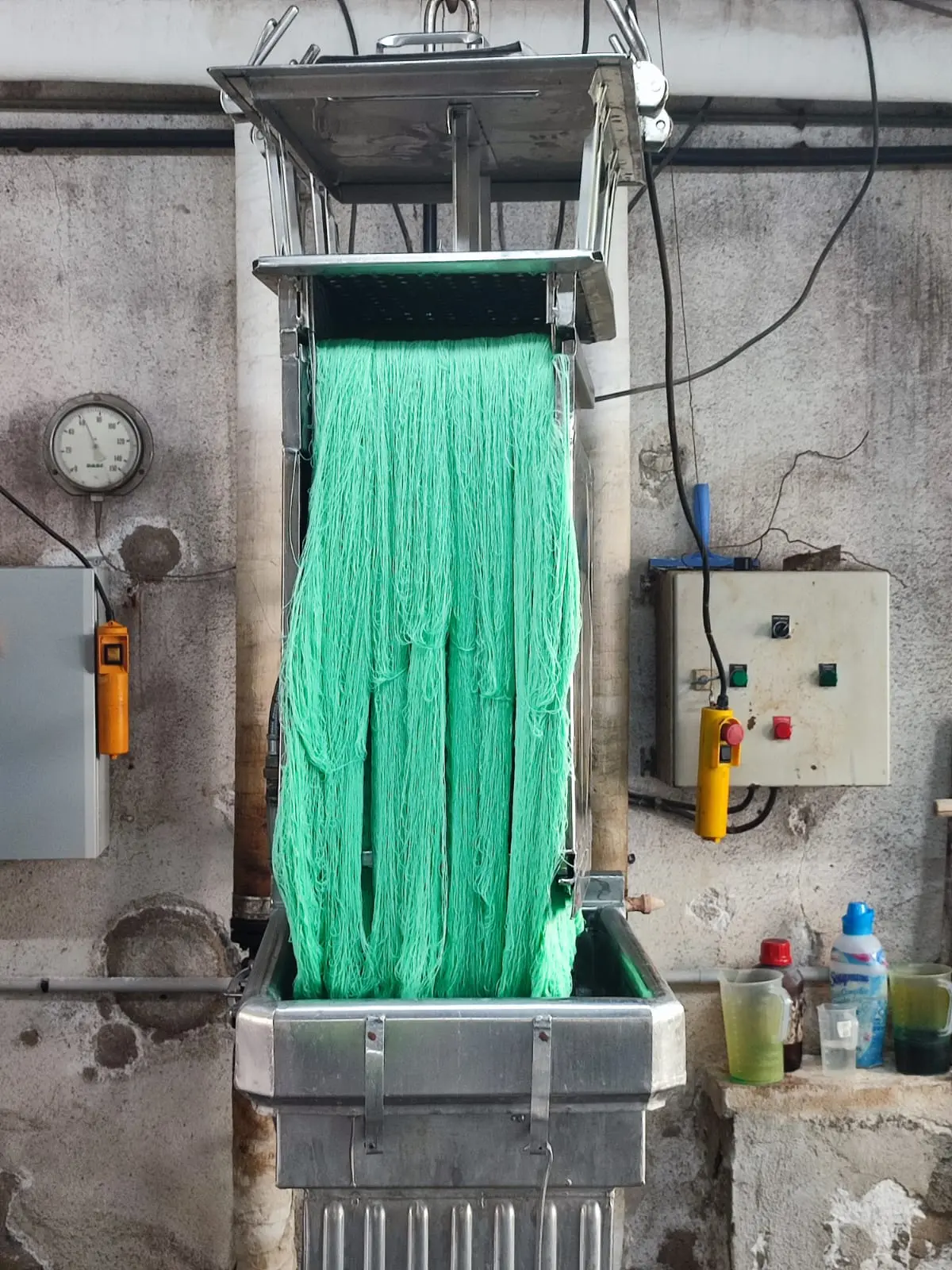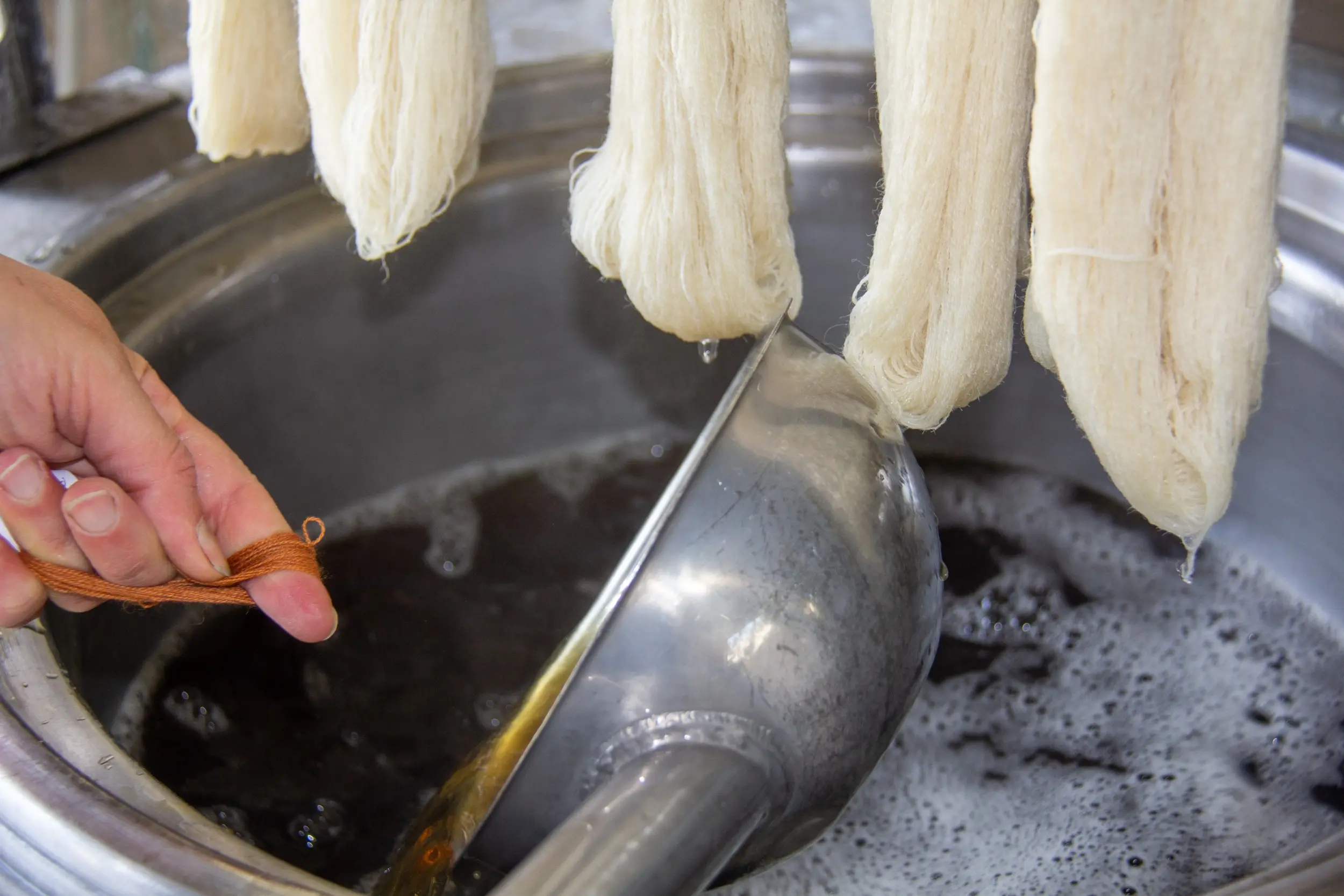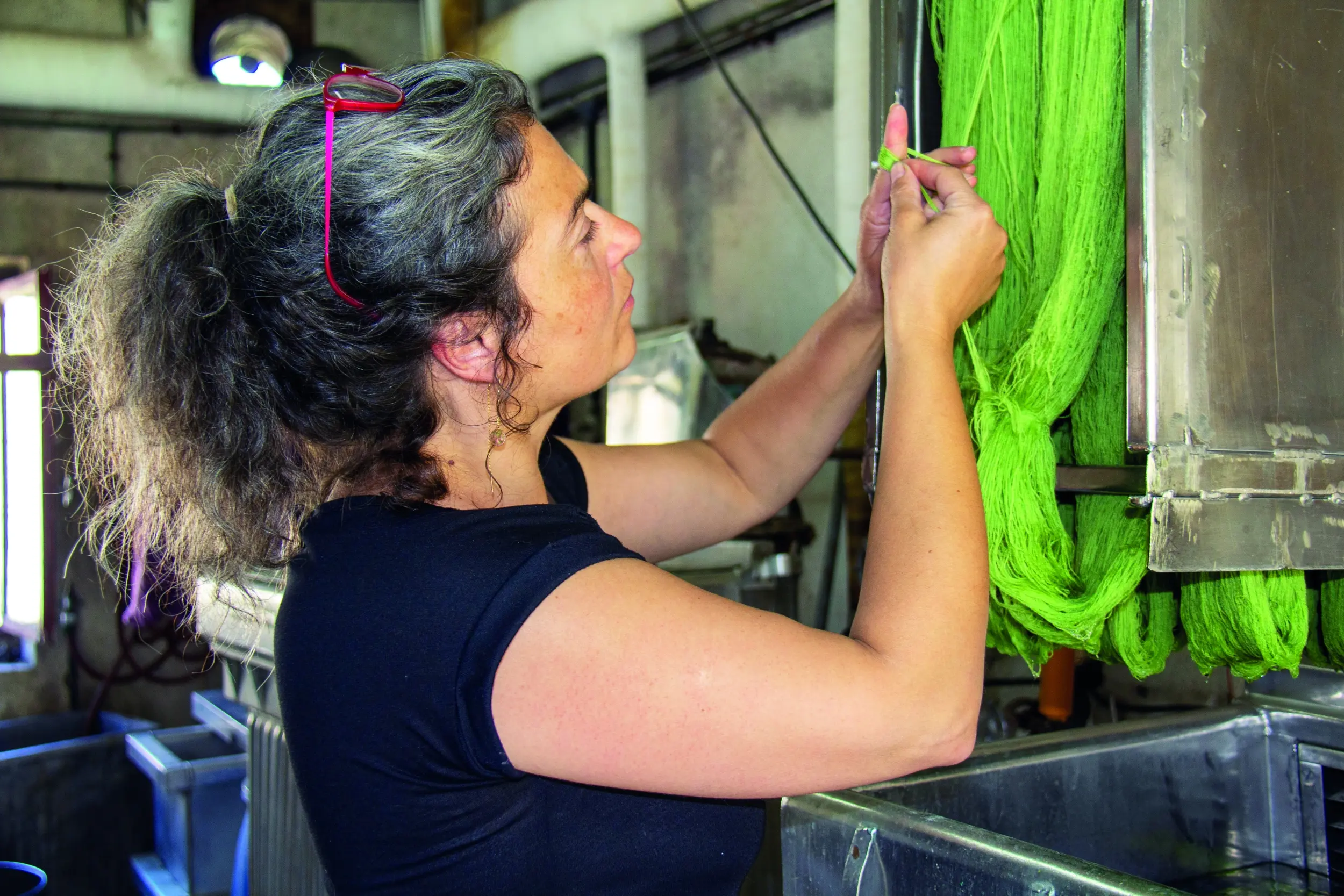Cartons et teintures

"Thinking wool": the cartoonist-dyer
An essential figure in weaving, the cartoonist-dyer transcribes the artist’s original design into a model, the "carton," transitioning from the pictorial language to the textile language. Placed under the warp threads, the carton guides the weaver throughout the weaving process. It can be more or less faithful to the original work, from a simple enlargement to the scale of the tapestry with some indications, to a complete translation of the work. The cartoonist-dyer can intervene in three elements of the tapestry: selecting colors to create a color palette suited to the work; choosing how to execute color transitions (stripes, beating, blending, etc.); and playing with the thickness and nature of the threads used in weaving (single or double warp, number of wool strands, etc.).
In image
The dyeing
Local dyers conduct thorough research to find shades that meet the specific needs of the low-warp tapestry. The empirical expertise of the dyer, or "colorist," lies in mastering the precise dosage of pigments by eye, and controlling the cooking time to achieve the desired color. This ensures consistency in shades and the long-lasting durability of colors over time. Unlike industrial processes, artisanal dyeing reflects true craftsmanship that is passed down through experience and transmission, without relying on precise recipes. The artisan dyer works by hand, using visual trichromacy: they create the desired hue by gradually adding small doses of powdered primary color pigments (blue, yellow, and red). Until the end of the 19th century, dyes used to color threads were of natural origin. Insects, plants, and minerals provided valuable sources of pigments, which are now experiencing a true revival of interest.
